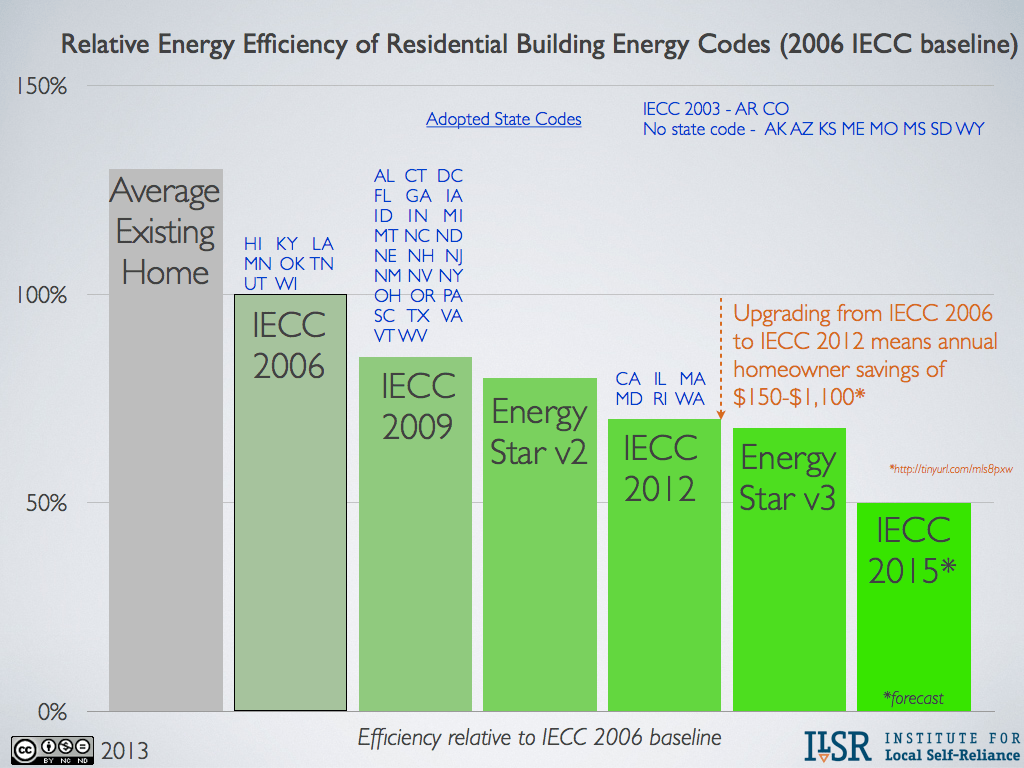How much money could you and your neighbors save on energy?
That depends a lot on the building code, which states (and sometimes cities) can use to set minimum standards for energy efficiency. The U.S. Department of Energy has a nice chart of which state has adopted which code, but the following chart is useful in understanding what that means from the standpoint of relative energy efficiency and energy savings. A third of states could save new homeowners anywhere from $150 to $1100 per year in energy costs by upgrading or implementing the most recent International Energy Conservation Code (IECC).
In many cases, cities have the authority to set more ambitious codes than the state, a great way to use local authority to save residents and businesses money! However, state authority varies widely. The following map illustrates which states allow local governments to set their own building energy codes:

It’s not just the code, but how it’s implemented that matters. In September 2013, environmental groups and home builders associations reached a historic agreement on building codes, focusing on improving efficiency through a performance based measure (the Home Energy Rating System) instead of the prescriptive IECC codes. The upshot could be a 20% improvement over the 2012 IECC code within two years by allowing builders to find their own strategies to meet the targets.
Could your city start saving big on energy dollars? Check out the charts, and for more information on energy efficiency and other strategies for boosting the economy with local energy investments, see ILSR’s recent report, City Power Play.
Photo credit: Flickr user jinjasi




